Abstract
Multiple regression analysis is used to investigate whether medical services in a large HMO are distributed primarily on the basis of need and predisposing factors (such as health status, age and sex) or according to enabling characteristics (such as coinsurance and income) of the population. Equations are formulated to estimate the likelihood and volume of preventive visit demand, nonpreventive visit demand and hospital admissions for a sample of 3,892 individuals enrolled in the Kaiser Foundation Health Plan of Portland, Oregon. The results indicate that predisposing and need factors are the main determinants of nonpreventive visits and hospital utilization, while enabling characteristics are important determinants (along with age and education) of preventive utilization. There are marked differences in the impact of explanatory factors on utilization by dependents (children) versus nondependents (adults).
Full text
PDF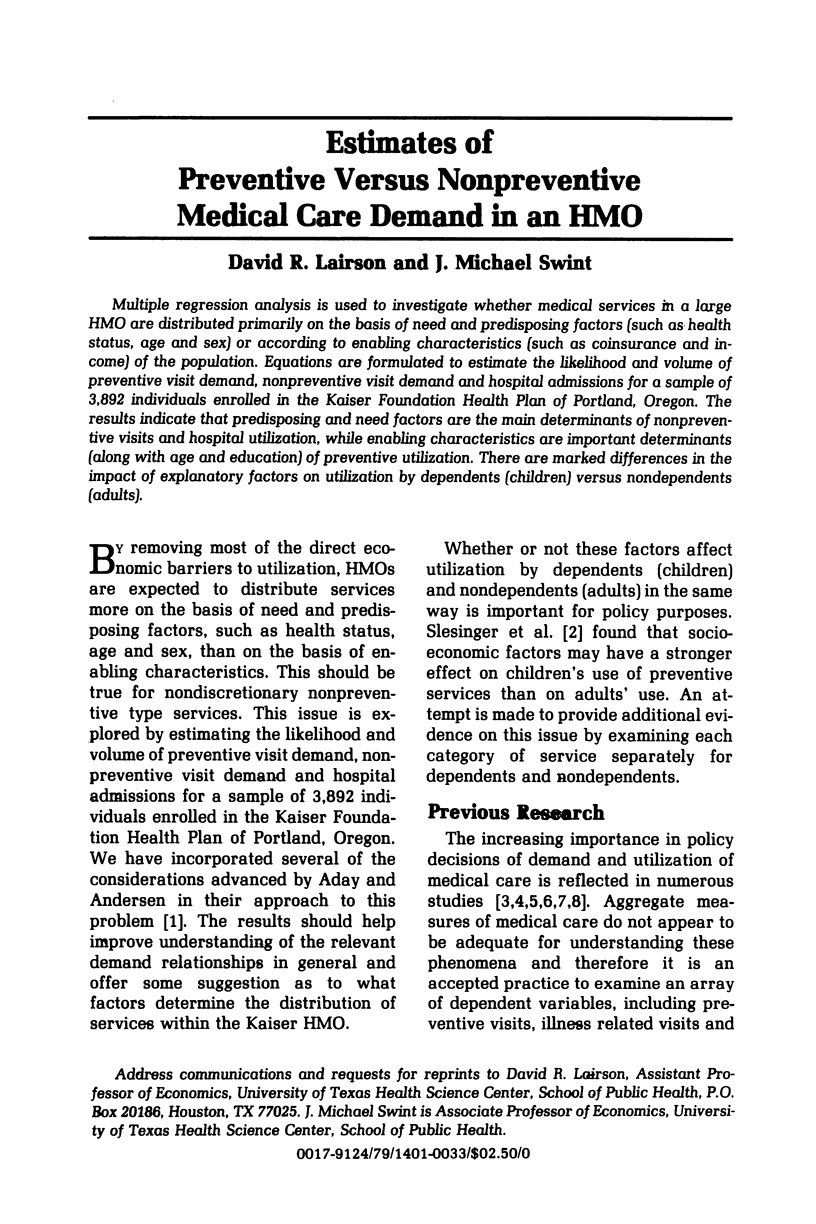
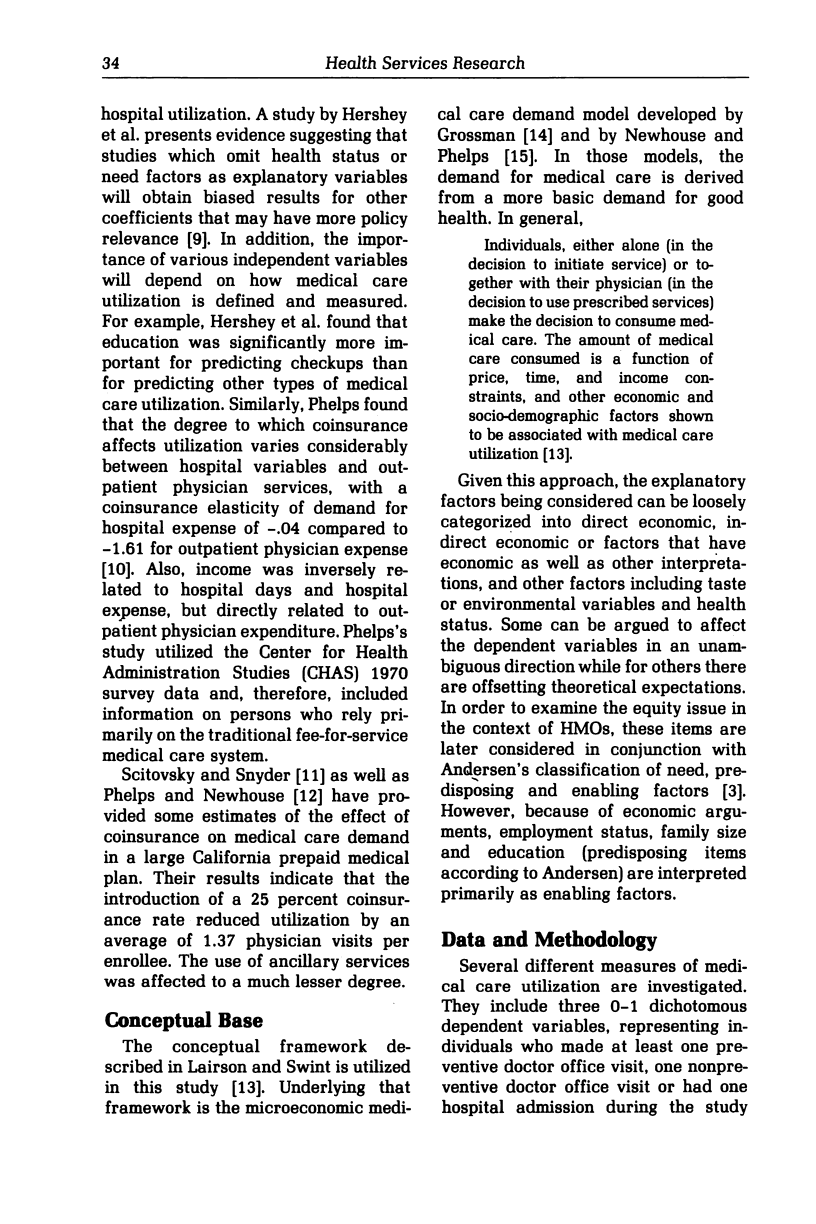
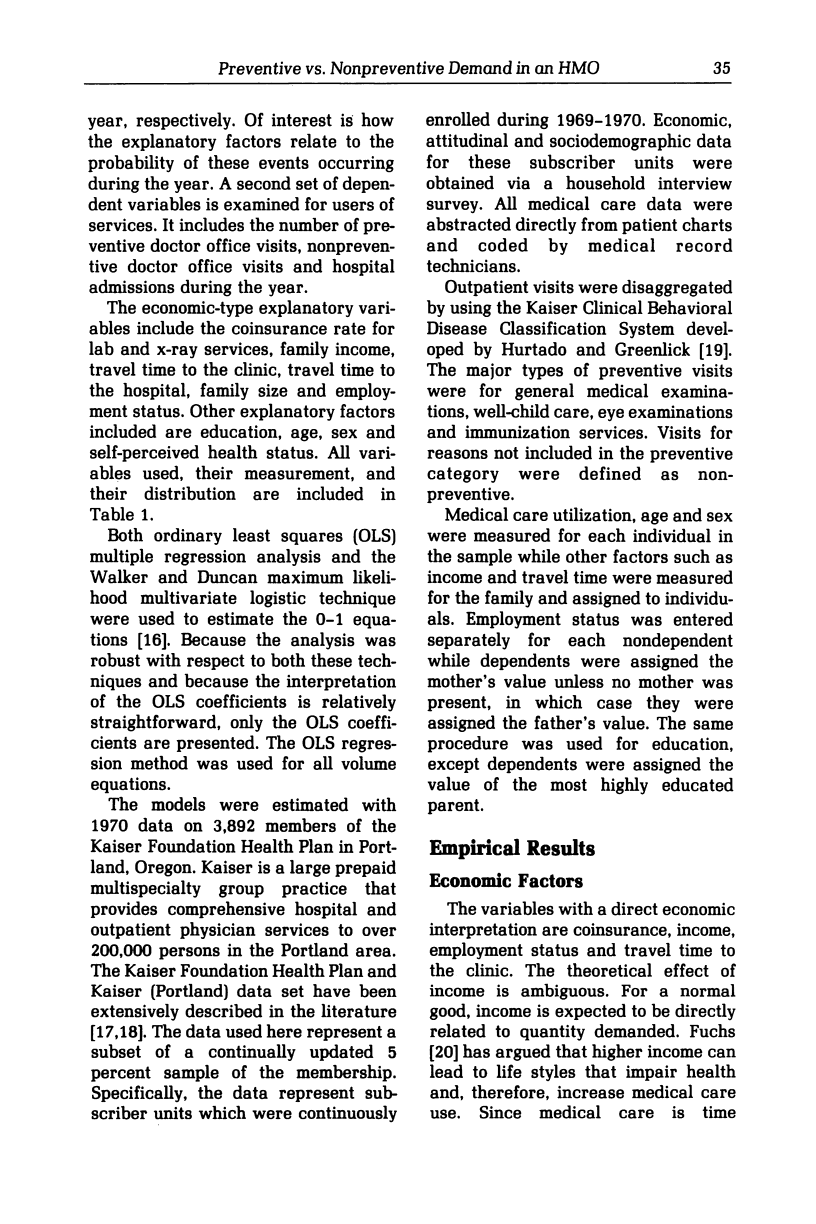
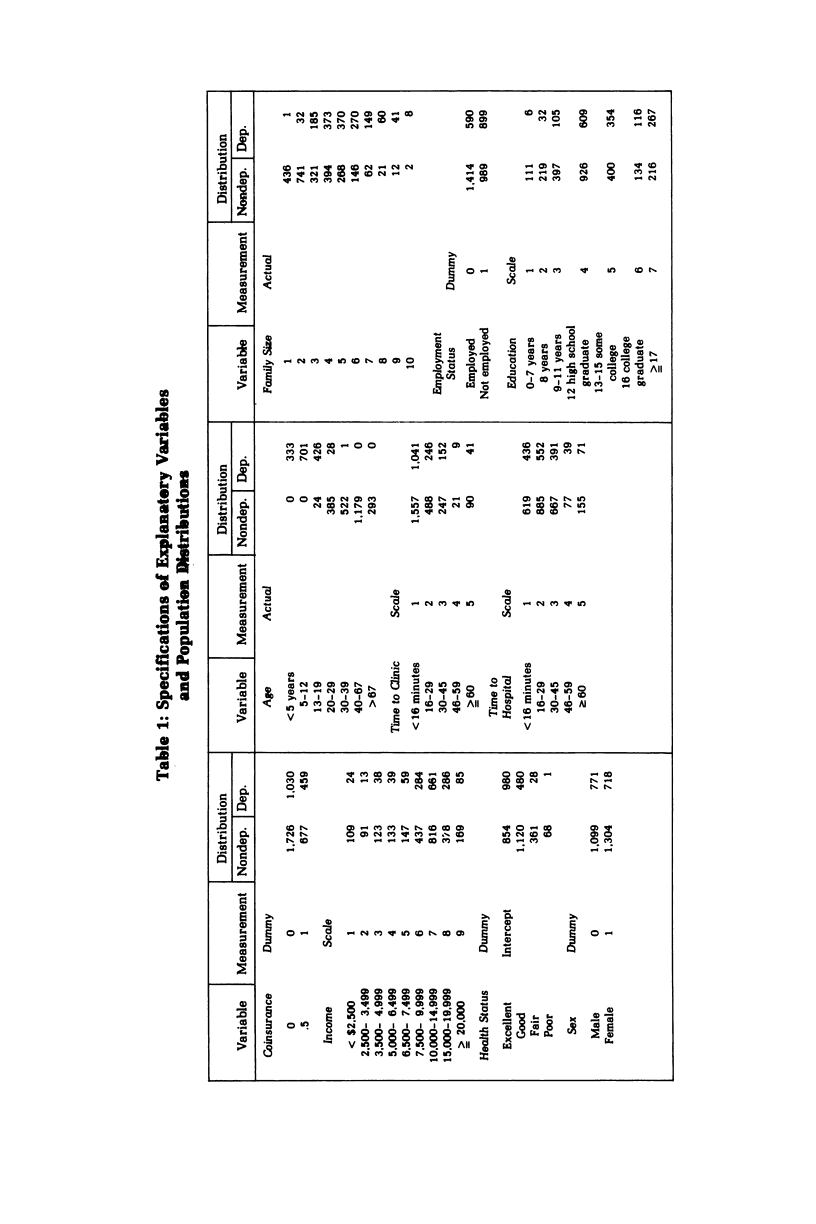
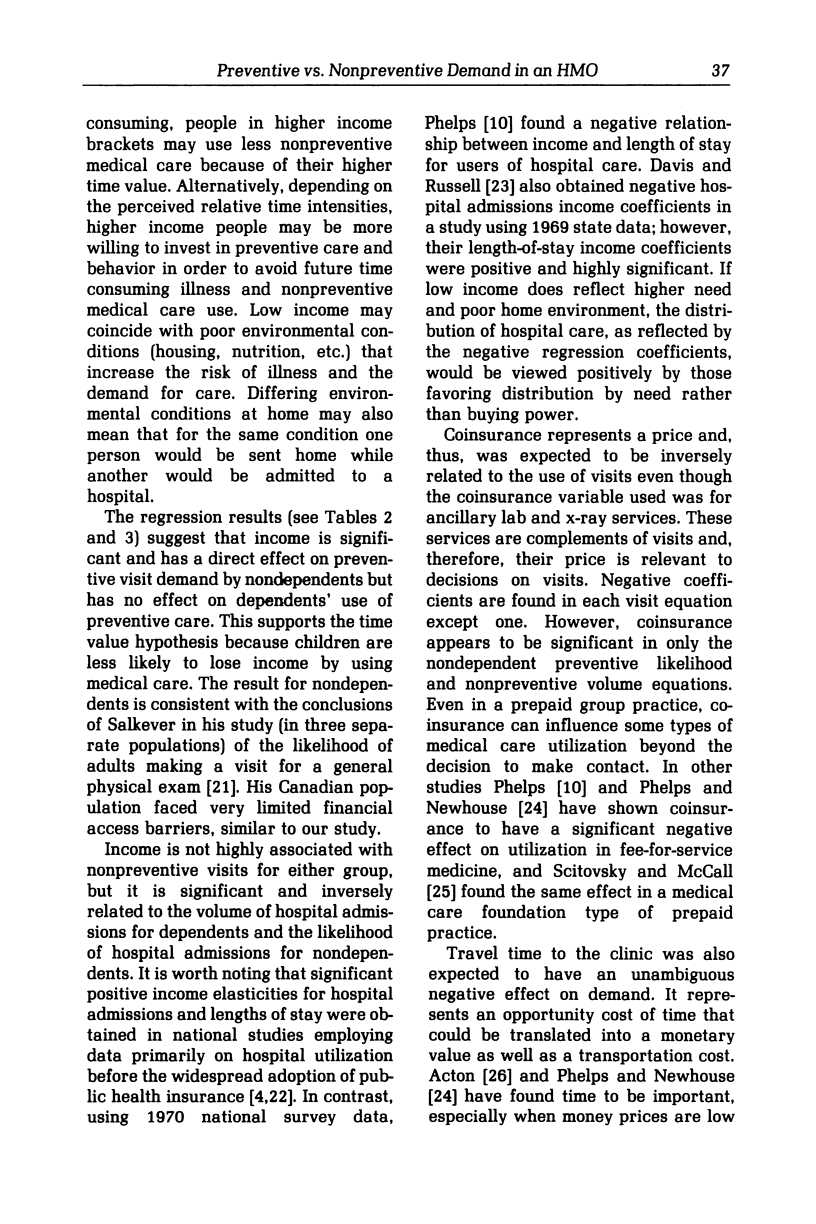
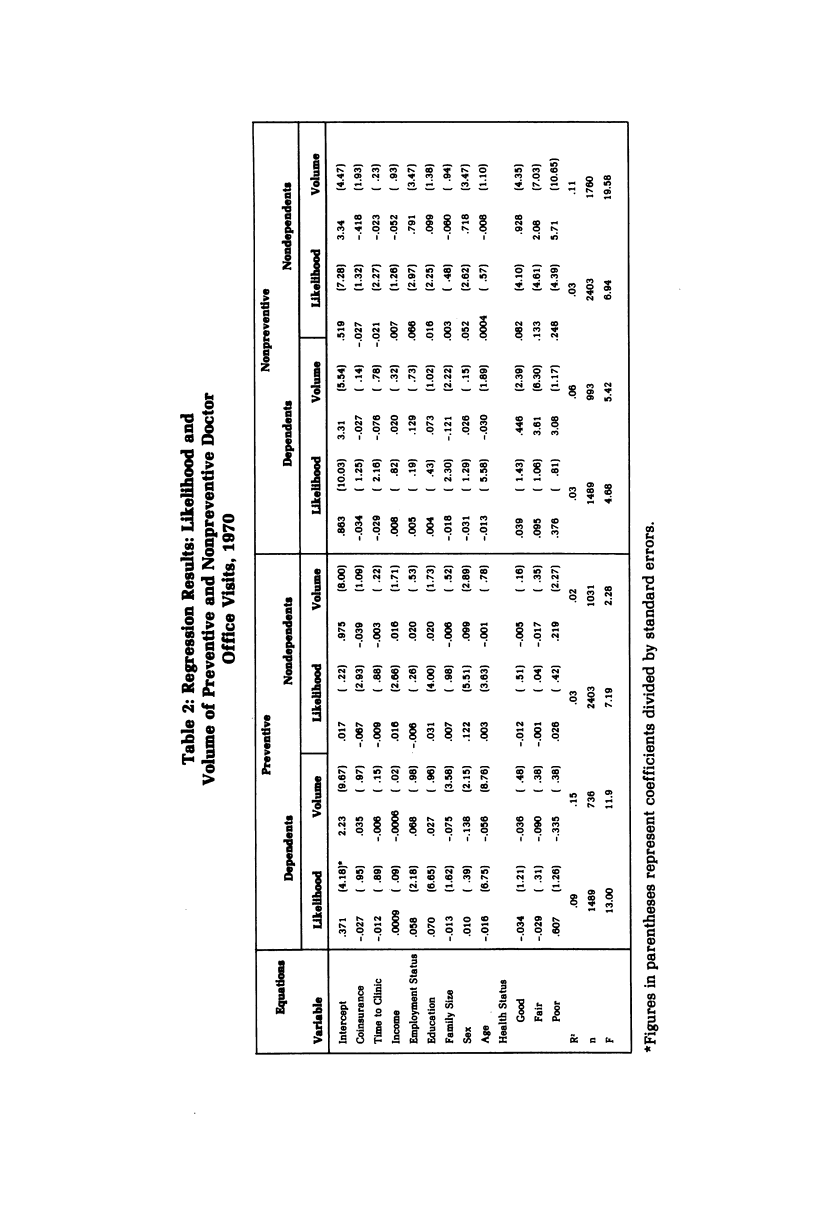
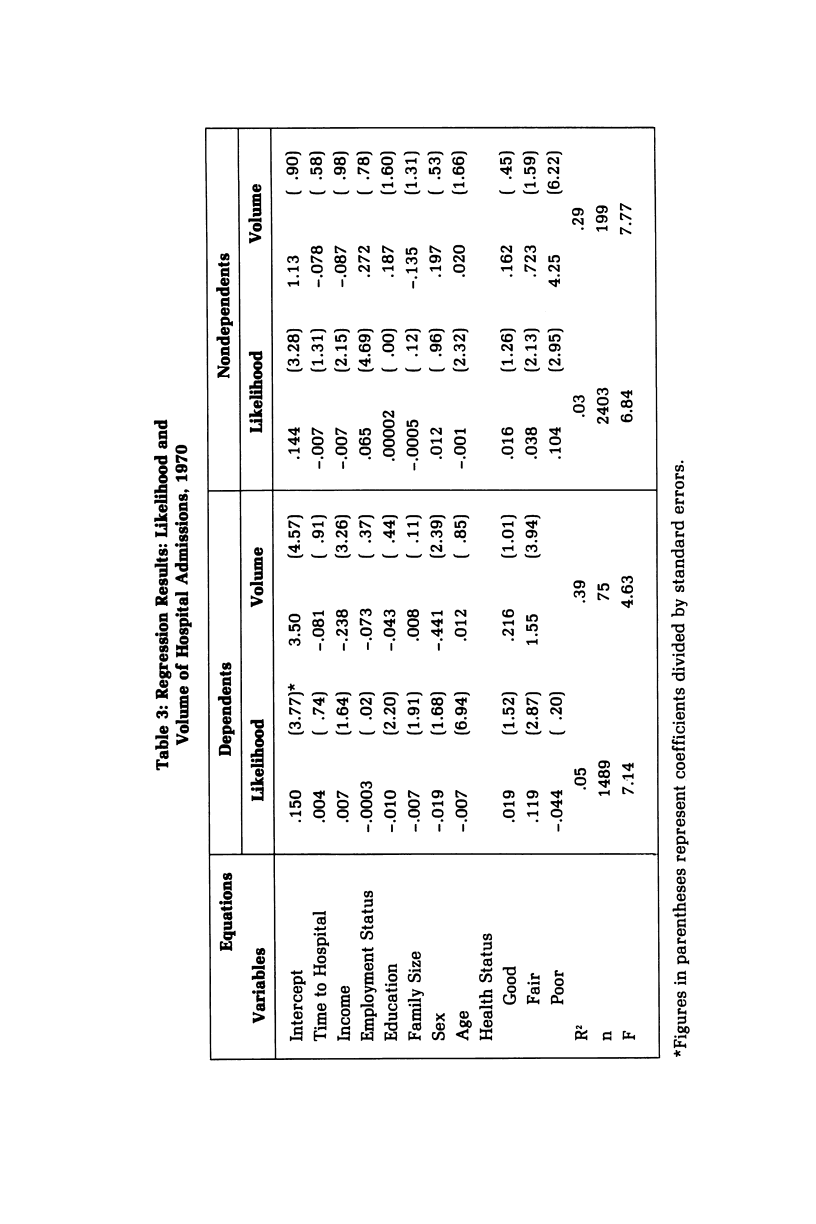
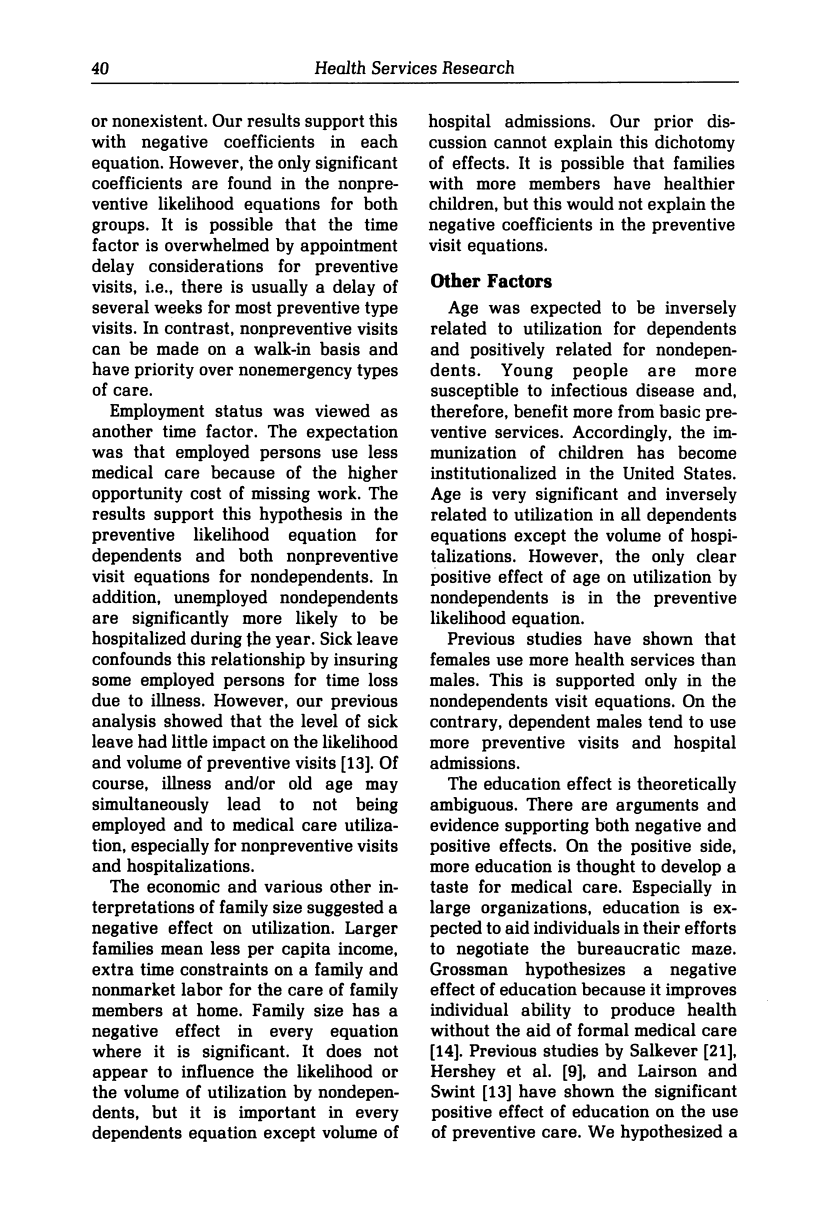
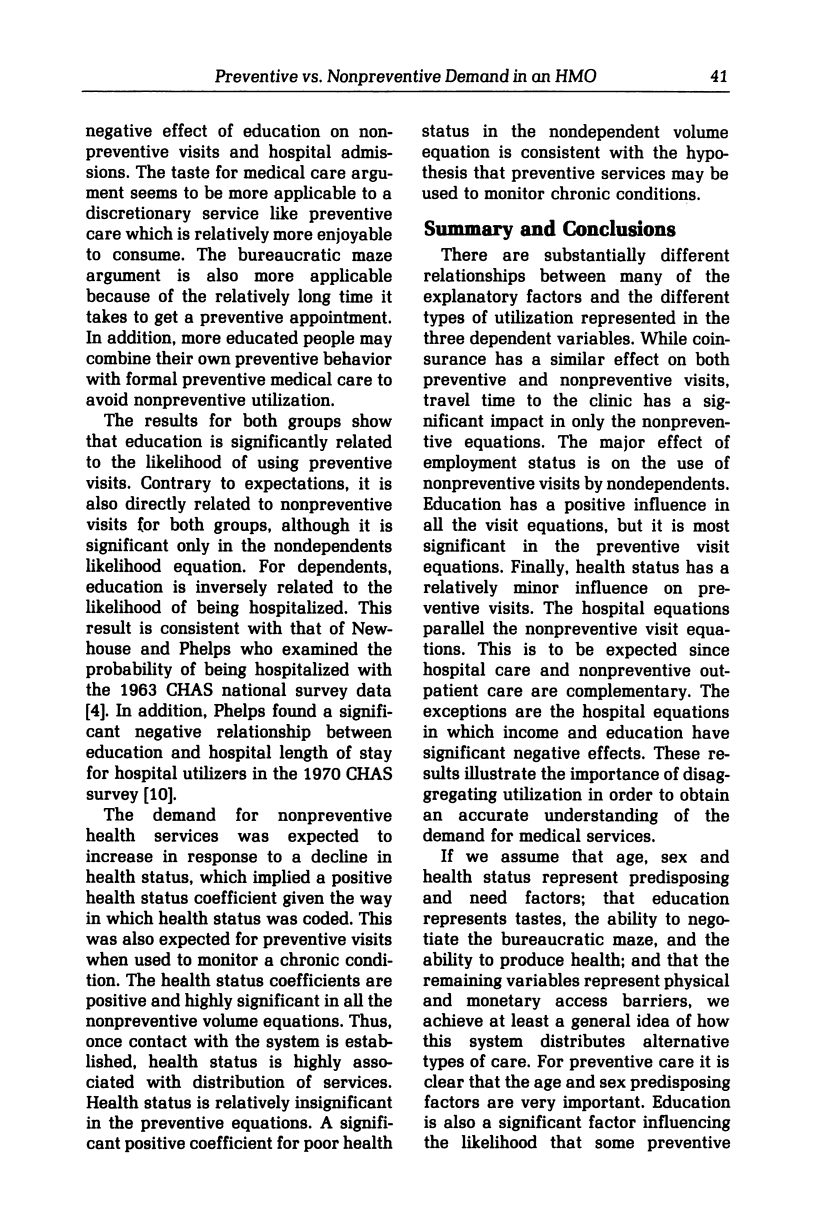
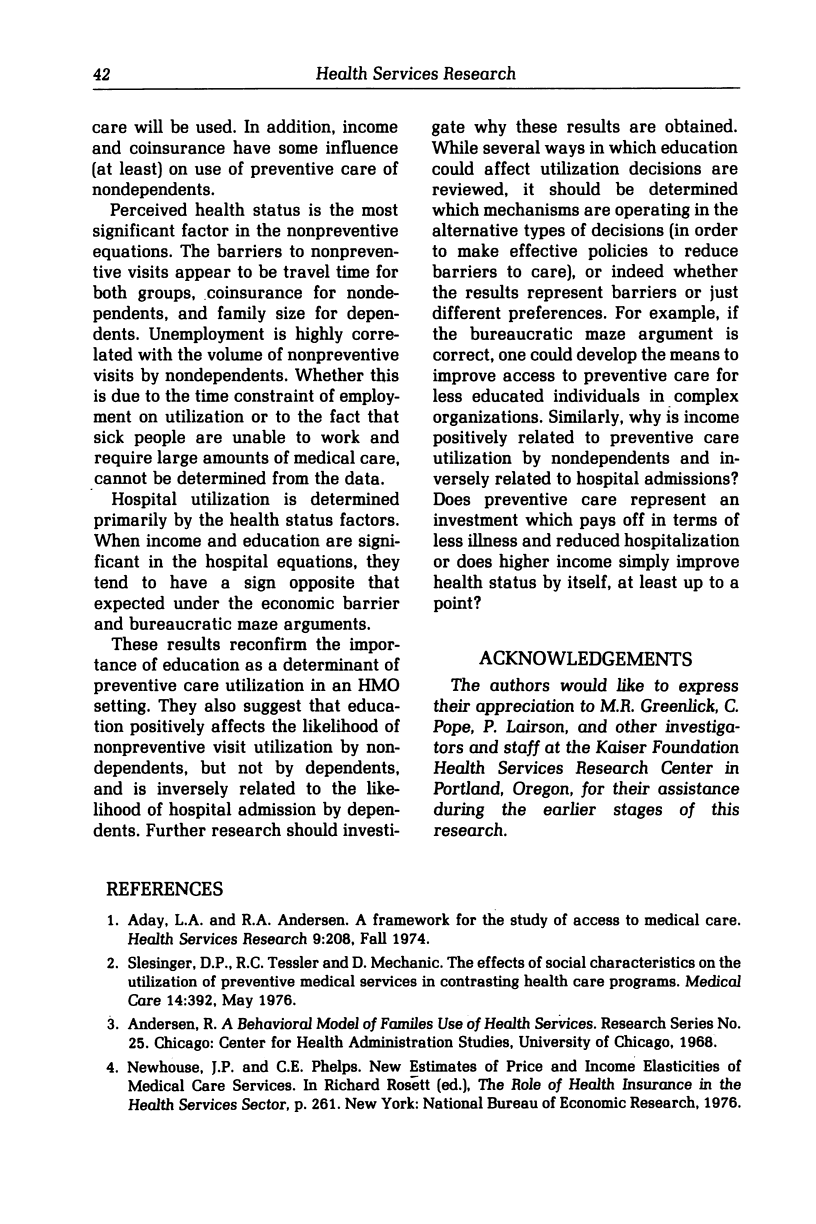

Selected References
These references are in PubMed. This may not be the complete list of references from this article.
- Aday L. A., Andersen R. A framework for the study of access to medical care. Health Serv Res. 1974 Fall;9(3):208–220. [PMC free article] [PubMed] [Google Scholar]
- Greenlick M. R., Hurtado A. V., Pope C. R., Saward E. W., Yoshioka S. S. Determinants of medical care utilization. Health Serv Res. 1968 Winter;3(4):296–315. [PMC free article] [PubMed] [Google Scholar]
- Hershey J. C., Luft H. S., Gianaris J. M. Making sense out of utilization data. Med Care. 1975 Oct;13(10):838–854. doi: 10.1097/00005650-197510000-00004. [DOI] [PubMed] [Google Scholar]
- Lairson D. R., Swint J. M. A multivariate analysis of the likelihood and volume of preventive visit demand in a prepaid group practice. Med Care. 1978 Sep;16(9):730–739. doi: 10.1097/00005650-197809000-00003. [DOI] [PubMed] [Google Scholar]
- Newhouse J. P., Phelps C. E., Schwartz W. B. Policy options and the impact of national health insurance. N Engl J Med. 1974 Jun 13;290(24):1345–1359. doi: 10.1056/NEJM197406132902404. [DOI] [PubMed] [Google Scholar]
- Salkever D. S. Accessibility and the demand for preventive care. Soc Sci Med. 1976 Sep-Oct;10(9-10):469–475. doi: 10.1016/0037-7856(76)90114-1. [DOI] [PubMed] [Google Scholar]
- Salkever D. S., German P. S., Shapiro S., Horky R., Skinner E. A. Episodes of illness and access to care in the inner city: a comparison of HMO and non-HMO populations. Health Serv Res. 1976 Fall;11(3):252–270. [PMC free article] [PubMed] [Google Scholar]
- Slesinger D. P., Tessler R. C., Mechanic D. The effects of social characteristics on the utilization of preventive medical services in contrasting health care programs. Med Care. 1976 May;14(5):392–404. doi: 10.1097/00005650-197605000-00002. [DOI] [PubMed] [Google Scholar]
- Walker S. H., Duncan D. B. Estimation of the probability of an event as a function of several independent variables. Biometrika. 1967 Jun;54(1):167–179. [PubMed] [Google Scholar]


